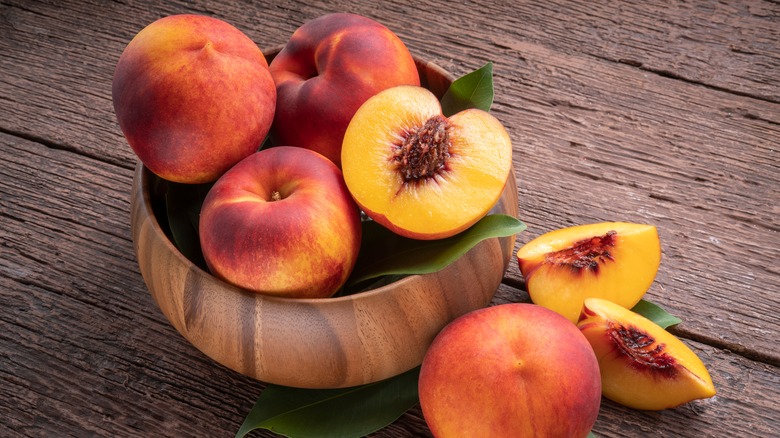What Peach Rankings Really Mean
The famous Georgia peach industry brings in between $30 million and $40 million annually for the state, whose peaches are renowned for their top-quality flavor and beautiful appearance (via The Peach Chamber). It's likely you haven't traveled to Georgia for a fresh peach. However, you may have enjoyed some from your local grocery store. But have you ever wondered how that juicy peach made it from Georgia to you? Some of the process has to do with rankings.
Speaking to Kitchn, Lane Southern Orchards in Fort Valley, Georgia offered a glimpse into how their peaches were packed, ranked, and shipped: Inside the Lane Southern facilities, thousands of peaches are washed and sorted along a conveyor belt, which moves about 70,000 pounds of peaches per hour, per Kitchn. There, expert eyes quickly scan the belt and give each single peach a ranking from one through three.
Peach rankings can be classified as different standards depending on the location.
Different peach rankings explained
At Lane Southern, via Kitchn, there are three grades: If a peach is ranked No. 1, it is perfect. It is the ideal amount of ripeness and has no unsightly markings. The No. 2 ranking marks a good peach, but it may have a few flaws. If a peach is ranked No. 3, it is already too ripe to be shipped to stores or other buyers. These peaches are destined for the orchard's own storefront, a local food bank, or the garbage.
The U.S. Department of Agriculture (USDA) has four, more detailed grades: The best ranking is U.S. Fancy, which are perfect peaches that consist of one variety, free from any diseases, and have the perfect amount of ripeness and aesthetic features. The next two lower rankings, U.S. Extra No. 1 and U.S. No. 1, are very similar. If a peach is graded U.S. Extra No. 1, it meets the same qualifications as U.S. No. 1, which must be of one variety, disease-free, and have the perfect ripeness, but with ideal aesthetics in a number of varieties. Finally, a U.S. No. 2 indicates that the peaches are of the same variety, a perfect ripeness, and free from damage and disease. However, aesthetic qualifications are not met.
According to the USDA, these grades "provide the fruit and vegetable industry with a uniform language for describing the quality and condition of commodities in the marketplace."
A facility can chose to use the USDA grade standards, but not all will.

